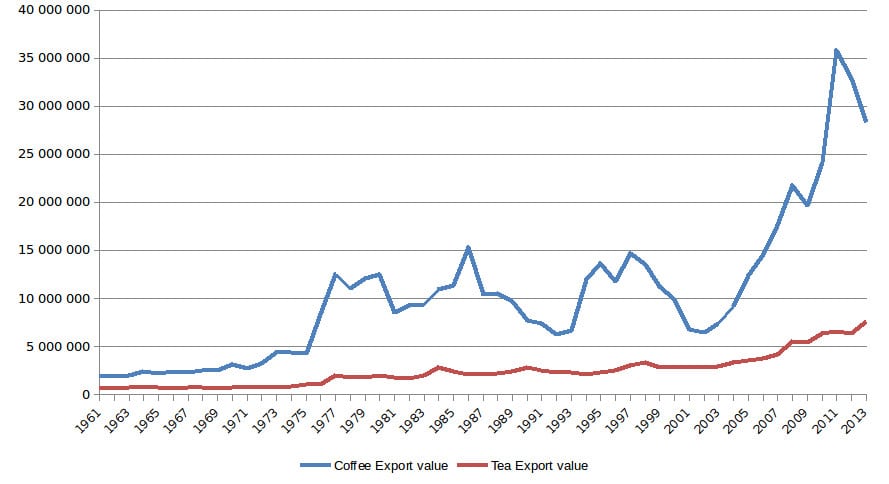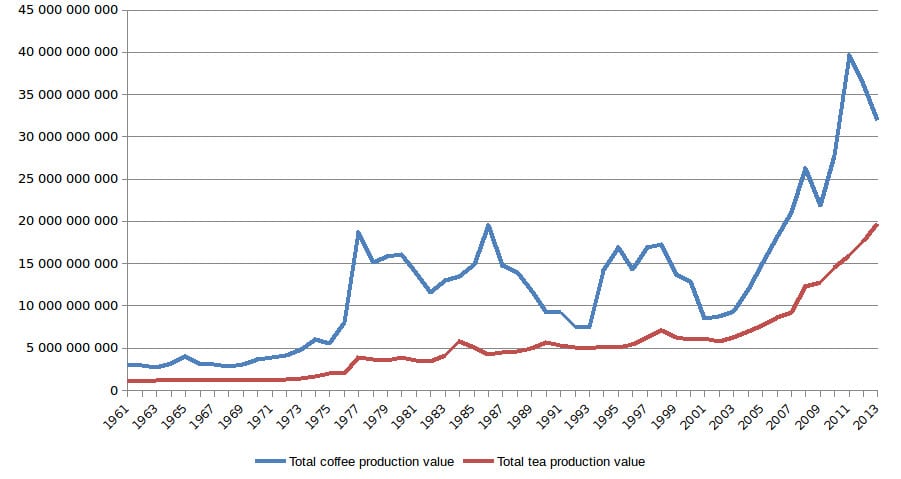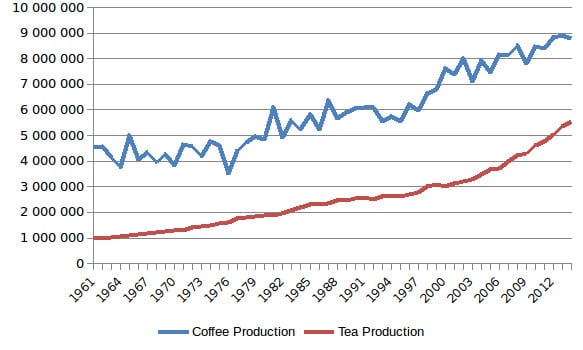According to a radio emission I heard a couple of weeks ago, coffee is the second most valuable item sold in the world behind oil. When I heard that, I had to check if it is was true and compare it to similar data for tea.
But first, I have to tell you a little story. I was asked why I wanted to compare everything to tea or rather does tea people have an inferiority complex regarding to coffee? The truth is much more simple. I do drink tea and speak about it on my blog. When I heard that radio emission on coffee, I had to check it and compare it to my favourite beverage, which is something that it could be compared to. I have no inferiority complex but a deep sense of curiosity trying to determine what is the truth in what I read and I must confess that I tend here to bring everything to the main topic of the blog: tea.
After this small deviation from my point today, let’s first thank the Food and Agriculture Organisation and their databases, which allowed me to collect data from 1961 and to check it, cross it and so on.
Total export value in 1,000 $
First, it is true that coffee has a higher sales value than tea. I couldn’t find a year when this wasn’t the case.
Then I thought that perhaps tea had a higher value per ton than coffee. I did the maths to find the average price in a year and over the 52 years of my sample (1961-2013), tea had the highest sale value pro ton 27 years and coffee 25 years. Surprising? Not really because it is an average and it takes everything into account from the production for the multinationals to the more artisan crafted products. However, as you can see below, the export value of coffee is far more erratic as the one of tea, which might be linked to several things, either variation in quantity (which is not really what happened as we will see) or in the quality of the production or in the way the prices are made (there are several ways of doing that with a possibility for the price to become completely disconnected from the real life conditions).
Export value per ton in $
I then thought that perhaps not everything was accounted for as a lot of tea is not sold on the international market (between 35 and 47% of the tea production was exported in the last 10 years and between 76 and 91% of the coffee production) so I decided to check if by adding the locally consumed goods, the overall picture became different…
Total production value in the world in $
…and the answer is no.
Why? The only explanation lies in the higher production of coffee in the world. Even if the difference is decreasing, it is still a huge one. In 2013, 1.58 more tons of coffee were produced in the world as tea (8,8 millions tons against 5,56) but the gap is narrowing as it comes from an impressive ratio of 4.64 in 1962 (4,53 millions against less than a million).
Total production in the world in tons
The only question I can see from this latest chart is to know if this trend will hold on the long run and will tea production narrow the gap with the coffee one.
Rather than be a theoretical question or an ego one from a tea drinker, it is more a way of knowing the maturity of the production of each commodity, its attractiveness to newcomers, the progresses it can make in productivity (I partly answered this question in another of my blog posts).
And those are interesting questions or so do I think.



